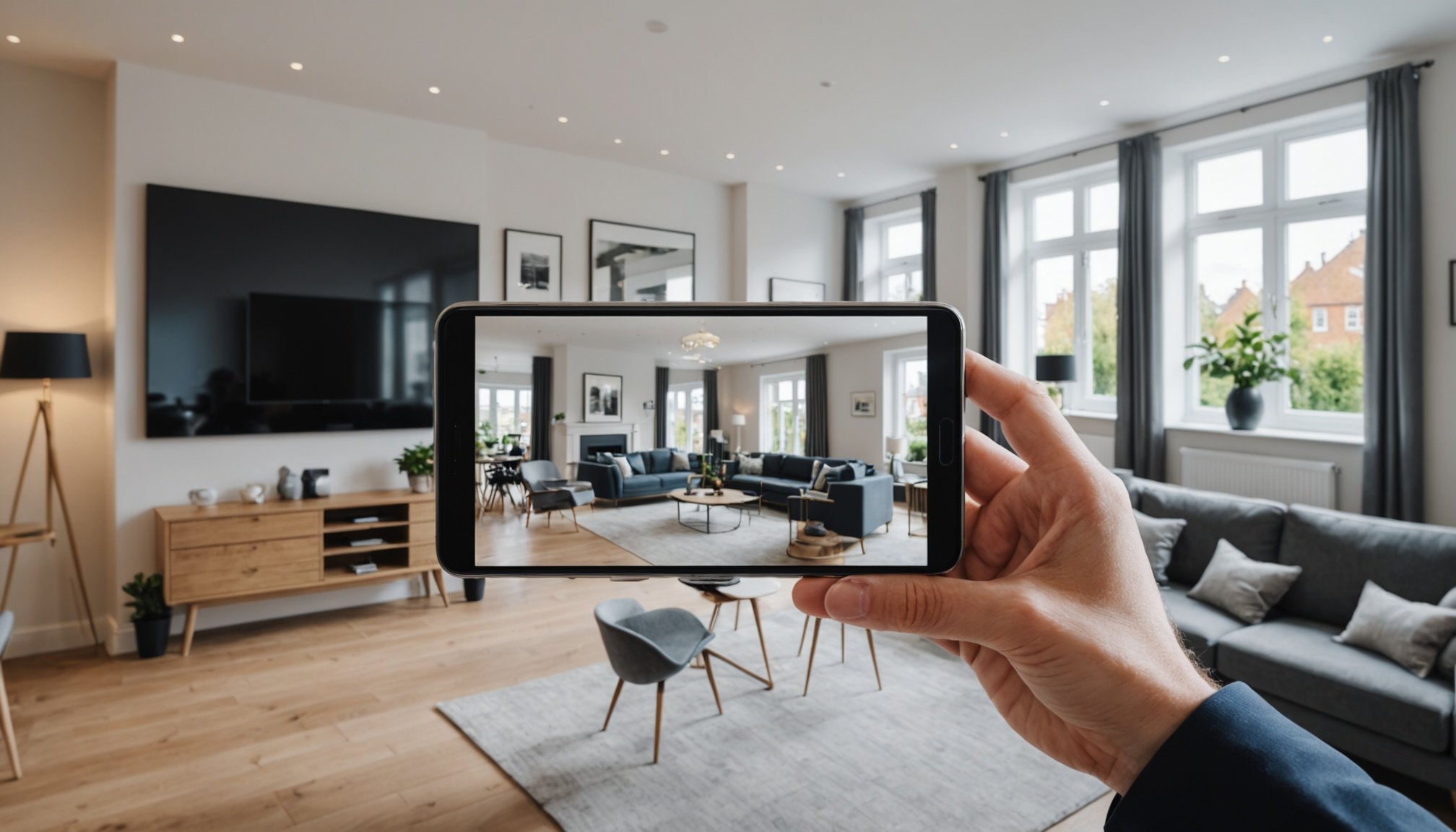Integrating Virtual Tours: A Game-Changer for UK Real Estate Agencies
In the ever-evolving landscape of real estate, incorporating virtual tours has become an essential strategy for UK estate agents looking to stay ahead of the curve. This innovative approach not only enhances the buyer experience but also boosts the efficiency and effectiveness of property marketing. Here’s a comprehensive guide on how to integrate virtual tours seamlessly into your real estate business.
Understanding the Benefits of Virtual Tours
Before diving into the implementation, it’s crucial to understand the numerous benefits that virtual tours offer.
Topic to read : Maximizing productivity: harnessing data analytics to revolutionize production in uk breweries
Enhanced Buyer Experience
Virtual tours provide potential buyers with an immersive and interactive experience, allowing them to explore properties from the comfort of their own homes. This is particularly beneficial for buyers who are short on time or located in different parts of the country or even the world.
"Virtual tours have revolutionized the way buyers interact with properties. It's no longer necessary to physically visit every property, which saves time and reduces the hassle of multiple viewings," says Jane Smith, a seasoned estate agent.
Increased Engagement
High-quality virtual tours can significantly increase engagement on property listings. When buyers can explore properties in detail, they are more likely to contact the estate agent for further information or to schedule a physical viewing.
Additional reading : Discover the Hottest Smart Home Innovations Transforming UK Properties in 2023
Cost-Effective Marketing
Traditional property viewings can be costly and time-consuming. Virtual tours reduce the need for multiple physical viewings, thereby saving both time and money.
Choosing the Right Tour Software
Selecting the appropriate tour software is vital for creating high-quality virtual tours. Here are some key features to consider:
Interactive Features
Look for software that offers interactive features such as 360-degree views, zoom capabilities, and the ability to navigate through the property.
High-Quality Visuals
Ensure the software can produce high-quality visuals. This includes clear images, smooth transitions, and the ability to capture detailed features of the property.
User-Friendly Interface
The software should have a user-friendly interface that makes it easy for buyers to navigate through the virtual tour.
Compatibility
Make sure the software is compatible with various devices, including smartphones, tablets, and desktops.
Steps to Integrate Virtual Tours
1. Invest in the Right Equipment
To create high-quality virtual tours, you need the right equipment. This includes a good camera, a tripod, and possibly a drone for exterior shots.
"A good camera is essential for capturing clear and detailed images. It's also important to invest in a tripod to ensure stability and avoid blurry photos," advises John Doe, a real estate photographer.
2. Prepare the Property
Before taking the virtual tour, ensure the property is well-prepared. This includes cleaning, decluttering, and arranging the furniture to showcase the property in its best light.
3. Capture Comprehensive Footage
Capture comprehensive footage of the property, including all rooms, common areas, and exterior spaces. Make sure to highlight key features such as natural lighting, storage spaces, and any unique selling points.
4. Edit and Enhance the Tour
Edit the footage to create a seamless and engaging virtual tour. Add captions, arrows, or other interactive elements to guide the buyer through the property.
5. Integrate with Property Listings
Integrate the virtual tour with your property listings on your website and other real estate platforms. This ensures that potential buyers can easily access and view the tour.
Marketing Your Virtual Tours
Social Media Promotion
Promote your virtual tours on social media platforms to reach a wider audience. Share snippets of the tour on Instagram, Facebook, and other platforms to pique the interest of potential buyers.
Email Marketing
Include links to virtual tours in your email marketing campaigns. This allows potential buyers to explore properties directly from their email.
Digital Marketing Strategy
Incorporate virtual tours into your overall digital marketing strategy. Use them in online ads, blog posts, and other digital content to enhance your property marketing.
Example of a Successful Implementation
Here’s an example of how an estate agent successfully integrated virtual tours into their marketing strategy:
Case Study: Greenfield Estates
Greenfield Estates, a UK-based real estate agency, saw a significant increase in buyer engagement after introducing virtual tours. Here’s how they did it:
- Equipment Investment: They invested in high-quality cameras and drones to capture detailed and aerial footage of properties.
- Property Preparation: They ensured all properties were well-prepared before capturing the virtual tour.
- Comprehensive Footage: They captured comprehensive footage of each property, highlighting key features.
- Editing and Enhancement: They edited the footage to create an immersive and interactive experience.
- Integration and Promotion: They integrated the virtual tours with their property listings and promoted them on social media and through email marketing.
"Since introducing virtual tours, we've seen a 30% increase in buyer inquiries. It's been a game-changer for our business," says Sarah Johnson, Marketing Manager at Greenfield Estates.
Comparative Table: Traditional vs. Virtual Tours
Here’s a comparative table highlighting the differences between traditional and virtual tours:
| Feature | Traditional Tours | Virtual Tours |
|---|---|---|
| Time and Effort | Requires physical visits | Can be viewed from anywhere |
| Cost | Involves travel and viewing costs | Cost-effective |
| Engagement | Limited interaction | Interactive and immersive |
| Accessibility | Limited to local buyers | Accessible globally |
| Marketing Potential | Limited to physical viewings | Can be shared on multiple platforms |
| Quality of Experience | Dependent on physical condition | Consistent high-quality visuals |
Practical Tips for Estate Agents
Here are some practical tips for estate agents looking to integrate virtual tours:
- Invest in Training: Ensure your team is trained to use the tour software effectively.
- Use High-Quality Images: Use high-quality images to capture the best features of the property.
- Highlight Unique Selling Points: Highlight unique selling points such as natural lighting, storage spaces, and any special features.
- Promote Consistently: Promote your virtual tours consistently across all marketing channels.
- Gather Feedback: Gather feedback from buyers to improve the quality and effectiveness of your virtual tours.
The Future of Real Estate Marketing
The integration of virtual tours is not just a trend; it’s the future of real estate marketing. As technology continues to evolve, we can expect even more innovative tools to emerge.
Augmented Reality
Augmented reality (AR) is the next step in virtual tours. AR allows buyers to see how furniture and other items would look in the property before making a purchase.
Virtual Reality
Virtual reality (VR) takes the immersive experience to the next level. Buyers can wear VR headsets to explore properties in a fully immersive environment.
Integrating virtual tours into your real estate business is a strategic move that can significantly enhance the buyer experience, increase engagement, and boost your marketing efforts. By following the steps outlined above and staying abreast of the latest technologies, you can position your agency at the forefront of the real estate industry.
In the words of Michael Brown, a leading real estate expert, “Virtual tours are no longer a luxury; they are a necessity in today’s competitive real estate market. They offer a unique way to showcase properties, engage buyers, and stand out from the competition.”











